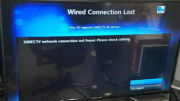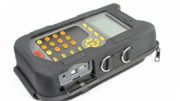Folks, I’ve seen this story over and over. Someone will call our help line at 888-233-7563 with a problem with their TV service. The techs there are well trained, and they know to ask the right questions. It takes a few days before the problem is solved, though… for one reason. The customer doesn’t give us the real picture. When we do understand what’s really going on, it usually takes very little time before we have an answer.
Case in point
A couple of weeks ago I was working with one of our senior technicians. He had a customer who couldn’t share programs between DVRs. This is a pretty rare complaint, because the whole-home system that DIRECTV uses is so robust.
We had the customer go through a lot of the normal diagnostic steps. They rebooted, they reset settings, they tried new cable. Nothing was working. They were getting frustrated.
I was with our tech every step of the way and I know that they asked all the questions that they needed to. But, along the way, the customer misled us.
Because you can’t diplex with DIRECTV
The customer finally let the truth out in conversation. They were using diplexers to pass over-the-air antenna signals on the same wire as the DIRECTV signals. This is a big no-no, and has been for over a decade. Yes, it was common practice in the mid-’00s, but then again using a flip phone was common practice back then too. You grew out of that, and you should grow out of the need to diplex.
Diplexing sounds like a great idea because it should make it easier for you to bring the signals you want into the house using less cabling. The problem is that it doesn’t work.
It doesn’t work because DIRECTV’s whole-home signal sits at the same frequencies as UHF television, from 475-625MHz. If you put TV signals on a wire at those frequencies, you can’t use whole-home sharing. It’s as simple as that.
Ethernet will not avail you
A lot of folks still want to connect their receivers over Ethernet, thinking that will let them get the best of both worlds. While some DIRECTV receivers do have Ethernet ports, they shouldn’t be used. They aren’t supported anymore and will just cause trouble.
There’s no sense in trying to outsmart us
While I couldn’t get them to admit it, it really seemed like the customer was intentionally trying to outsmart us. It seemed like someone else had told them that their diplexing setup was a problem. Perhaps they figured that if they didn’t tell us about it, we would help them find the “real” problem. Folks, that’s not how we work.
We’re here to help. We’re here to let you know what’s possible and what isn’t. We aren’t here to judge your system or force you to do things “the corporate way.” We’re here to help your home theater dreams come true. But in order to do that, we need to be honest with what you can and cannot do. Some things, like diplexing, just aren’t going to work. Believe me I’ve tried it a bunch of different ways. If you want to diplex, you can’t share programs. Not only that but if you do diplex, modern receivers and DVRs will complain.
Be honest with your tech when they ask questions. They just want to get a clear picture of what you’re going through. If something isn’t going to work, they want to let you know that early in the process. And if there is a way to make things work, they’ll let you know. Simple as that.





